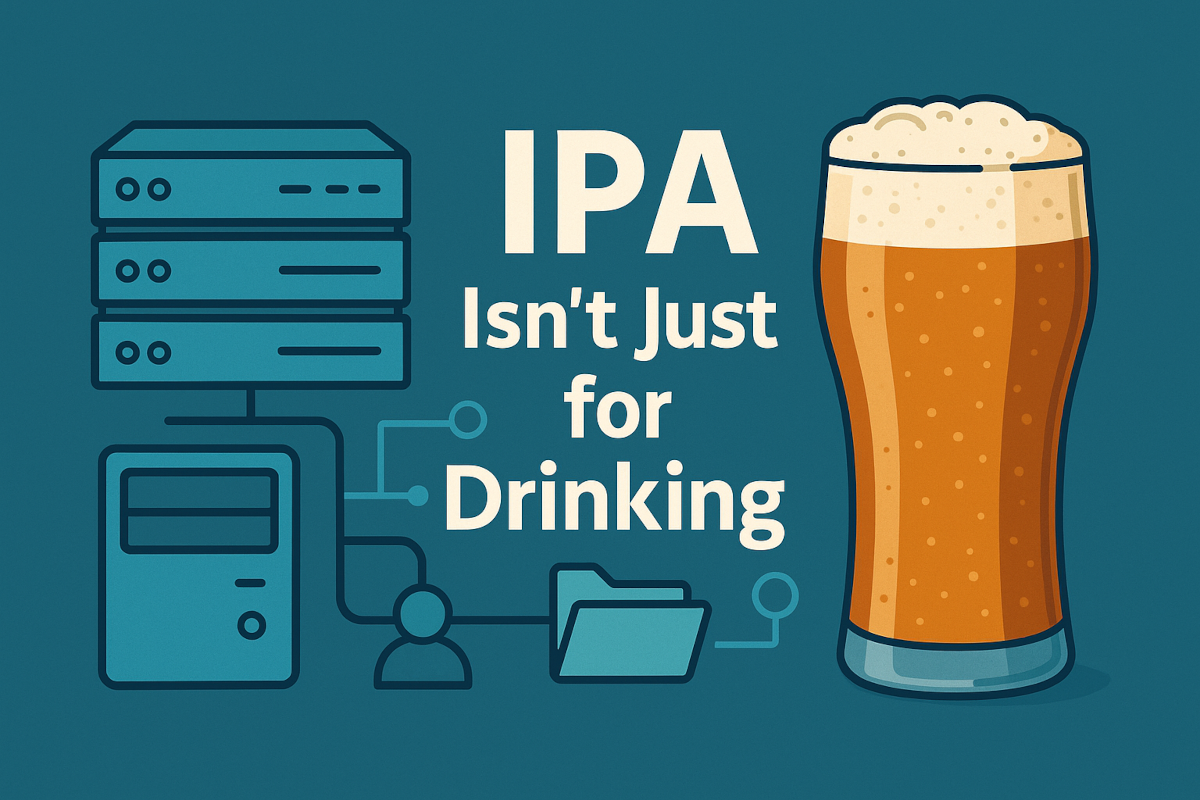The Case for Centralized Login and Home Directories.
Improved workflow: Roaming home folders makes it so much easier to keep on top of everything that we need to do.
Say you downloaded a file on your laptop, but now you’re at your workstation and your laptop is hibernated in your backpack, but you need the file. Maybe you want to keep all your config file backups in a consistent place so .bak files aren’t scattered throughout /etc/ on every VM that you manage.
DATE=$(date +%F) #%F outputs only the date
cp /etc/fstab /etc/fstab.$DATE #old
cp /etc/fstab /home/ry/bak/fstab.server.$DATE #New, centralized methodSay you want to be able to access your .zst vzdumps from Proxmox. On your pve node run:
mount --bind /var/lib/vz/dump /home/ry/pve_bak
#This allows any auto home device to access the Proxmox backups.
#This does NOT create a copy in ~/pve_bak it just binds the files thereSSH keys don’t need to be added to every machine. Do it once and centralized home takes care of it. .bashrc, .bash_history, etc are all centralized.
Instead of running docker containers in ~/docker, you can run them in /opt/docker, create a syslink and all your scripts still work with the outdated locations.
mv /home/$USER/docker /opt/
chown -R $USER:$USER /opt/docker
ln -s /opt/docker /home/$USER/dockerWhy IPA? What did Active Directory do to me?
If you’ve been around enterprise IT, you know the default answer to centralized login is Active Directory. But in a Linux-first homelab, FreeIPA is the better fit. Here’s why:
FreeIPA vs. Active Directory
| Category | FreeIPA 🐧 | Active Directory 🪟 |
|---|---|---|
| Cost / Licensing | 100% free & open source | Requires Windows Server licenses + CALs |
| Platform Fit | Built for Linux, POSIX-native | Windows-centric; Linux integration is bolted on |
| Management Style | CLI + WebUI (lightweight, headless Rocky) | Heavy GUI tooling (RSAT, ADUC, Windows Server Manager) |
| Resource Footprint | Runs on a minimal Rocky/Alma/RHEL VM | Wants a full Windows Server install, often with GUI |
| Protocols | Kerberos, LDAP, NFSv4 sec=krb5p, sudo/HBAC integration | Kerberos & LDAP, but Linux support often requires schema tweaks or extra daemons |
| Community | Transparent, upstream-driven, Linux admins | Closed ecosystem, roadmap controlled by Microsoft |
| Use Case Fit | Homelabs, Linux-only shops, small enterprises | Windows-heavy enterprises, Office365/Exchange integration |
This homelab is Linux-exclusive. The only time Windows boots here is for a quick dual-boot gaming session — everything else runs on Linux servers, laptops, and VMs.
For that reality, Active Directory would just be overhead. FreeIPA integrates natively with NFSv4 roaming homes, Kerberos authentication, SSH, and sudo policies, all without dragging Windows Server into the mix.
How IPA Powers Roaming Homes
Centralized logins aren’t just about who you are — they’re about what follows you. FreeIPA makes this possible by being the glue between Kerberos authentication, LDAP user directories, and NFSv4 with strong encryption (sec=krb5p).
The Workflow in Action
- Login Anywhere
- You log into your laptop, workstation, or even a VM.
- PAM + SSSD talk to FreeIPA → Kerberos issues you a ticket (
kinithappens behind the scenes). - Your
homeDirectoryattribute (/home/$USER) tells the system where to mount your files.
- Autofs Mounts Your Home
- Autofs sees
/home/ryrequested, reaches out to the NFS server. - NFS enforces Kerberos (
sec=krb5p) → only valid IPA users with tickets get access. /srv/nfs/home/ryon the server becomes/home/ryon the client.
- Autofs sees
- Your World Follows You
.bashrc,.ssh/authorized_keys,.bash_history— all consistent, everywhere.- Proxmox backups appear under
~/pve_bakthanks to bind mounts. - Docker workloads live in
/opt/dockerbut are still accessible as~/dockervia symlink. - Config backups are centralized under
~/bak/.
Why IPA Is the Key
- Kerberos Security → Passwords aren’t sprayed across the network, only tickets are.
- LDAP User Directory → One place to define users, groups, sudo rules, and HBAC policies.
- NFSv4 Integration → IPA manages service principals for the NFS server so file access is both secure and seamless.
- Scalability → Whether it’s 3 machines or 30, the login flow doesn’t change.
Want to Set This Up Yourself?
I’ve split the full step-by-step builds into separate guides:
IPA requires Fully Qualified Domain Names (FQDN) with DNS properly configured. I use Pi-Hole to run local DNS on my network. You could also edit /etc/hosts or C:\Windows\System32\drivers\etc\hosts on Windows.
Configuring IPA Server on Rocky Linux. (IPA is developed and managed by Red Hat so I chose something in the RHEL ecosystem.)
Configuring FreeIPA + NFS server integration
These docs cover everything from package installs to /etc/krb5.conf, /etc/auto.master, keytab management, and troubleshooting.
💡 In short: FreeIPA is what makes roaming homes secure, not just convenient. Without IPA, you could mount an NFS share — but it wouldn’t be tied to your identity, and you’d lose encryption and centralized access control.

Leave a Reply